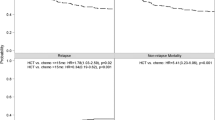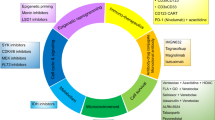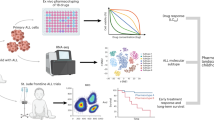Abstract
Adolescents and young adult (AYA) patients with acute lymphoblastic leukemia (ALL) face worse outcomes than children. While pediatric-inspired protocols have improved outcomes, the ability of patients to complete these intensive regimens and the reasons for discontinuation are unknown. We analyzed a cohort of 332 AYA patients (aged 15–49 years) and 1159 children (aged 1–14 years) with Ph-negative ALL treated on DFCI consortium protocols. We found that AYA patients completed treatment at lower rates than children (60.8% vs. 89.7%, p < 0.001), primarily due to higher rates of early treatment failure (14.5% vs. 2.4%, p < 0.001). Withdrawal from treatment for toxicity, social/personal, or unknown reasons was uncommon, but higher among AYA patients (9.3% vs 4.7%, p = 0.001). Patients who remained on assigned therapy for one year had favorable overall survival (AYA 5-year OS 88.9%; children 5-year OS 96.4%; p < 0.001). Among patients who continued treatment for 1 year, AYA patients completed asparaginase (defined as receiving 26+ weeks) at lower rates than children (79.1% vs. 89.6%, p < 0.001). Patients who received more weeks of consolidation asparaginase had higher overall and event-free survival. Efforts should focus on identifying patients at risk for early treatment failure and optimizing asparaginase delivery.
This is a preview of subscription content, access via your institution
Access options
Subscribe to this journal
Receive 12 print issues and online access
$259.00 per year
only $21.58 per issue
Buy this article
- Purchase on Springer Link
- Instant access to full article PDF
Prices may be subject to local taxes which are calculated during checkout




Similar content being viewed by others
Data availability
The datasets generated during and/or analyzed during the current study are available from the corresponding author on reasonable request as long as privacy considerations are maintained.
References
U.S. Cancer Statistics Working Group. U.S. Cancer Statistics Data Visualizations Tool, based on November 2018 submission data (1999–2016): U.S. Department of Health and Human Services, Centers for Disease Control and Prevention and National Cancer Institute; www.cdc.gov/cancer/dataviz, June (2019).
Vrooman LM, Blonquist TM, Stevenson KE, Supko JG, Hunt SK, Cronholm SM, et al. Efficacy and Toxicity of Pegaspargase and Calaspargase Pegol in Childhood Acute Lymphoblastic Leukemia: Results of DFCI 11-001. J Clin Oncol. 2021;39:3496–505. https://doi.org/10.1200/JCO.20.03692. Epub 2021 Jul 6. PMID: 34228505.
Hunger SP, Lu X, Devidas M, Camitta BM, Gaynon PS, Winick NJ, et al. Improved survival for children and adolescents from 1990-2005: a report from the Children’s Oncology Group. J Clin Oncol. 2012;30:1663–9.
Pui CH, Campana D, Pei D, Bowman WP, Sandlund JT, Kaste SC, et al. Treating childhood acute lymphoblastic leukemia without cranial irradiation. N. Engl J Med. 2009;360:2730–41.
Patel B, Rai L, Buck G, Richards SM, Mortuza Y, Mitchell W, et al. Minimal residual disease is a significant predictor of treatment failure in non T-lineage adult acute lymphoblastic leukaemia: final results of the international trial UKALL XII/ECOG2993. Br J Haematol. 2010;148:80–9. https://doi.org/10.1111/j.1365-2141.2009.07941.x. Epub 2009 Oct 26. PMID: 19863538.
Larson RA, Dodge RK, Burns CP, Lee EJ, Stone RM, Schulman P, et al. A five-drug remission induction regimen with intensive consolidation for adults with acute lymphoblastic leukemia: cancer and leukemia group B study 8811. Blood 1995;85:2025–37. PMID: 7718875
Roberts KG. Genetics and prognosis of ALL in children vs adults. Hematol Am Soc Hematol Educ Program. 2018;2018:137–45. https://doi.org/10.1182/asheducation-2018.1.137.
Roberts KG, Li Y, Payne-Turner D, Harvey RC, Yang YL, Pei D, et al. Targetable kinase-activating lesions in Ph-like acute lymphoblastic leukemia. N. Engl J Med. 2014;371:1005–15. https://doi.org/10.1056/NEJMoa1403088.
Stock W, La M, Sanford B, Bloomfield CD, Vardiman JW, Gaynon P, et al. Children’s Cancer Group; Cancer and Leukemia Group B studies What determines the outcomes for adolescents and young adults with acute lymphoblastic leukemia treated on cooperative group protocols? A comparison of Children’s Cancer Group and Cancer and Leukemia Group B studies. Blood. 2008;112:1646–54. https://doi.org/10.1182/blood-2008-01-130237.
Stock W, Luger SM, Advani AS, Geyer S, Harvey R, Mullighan C, et al. Favorable outcomes for older adolescents and young adults with acute lymphoblastic leukemia: early results of U.S. Intergroup trial C10403. Blood. 2014;124:796. Abstract 796.
DeAngelo DJ, Stevenson KE, Dahlberg SE, Silverman LB, Couban S, Supko JG, et al. Long-term outcome of a pediatric-inspired regimen used for adults aged 18-50 years with newly diagnosed acute lymphoblastic leukemia. Leukemia 2015;29:526–34.
Huguet F, Leguay T, Raffoux E, Thomas X, Beldjord K, Delabesse E, et al. Pediatric-inspired therapy in adults with Philadelphia chromosome-negative acute lymphoblastic leukemia: the GRAALL-2003 study. J Clin Oncol. 2009;27:911–8.
Stock W, Luger SM, Advani AS, Yin J, Harvey RC, Mullighan CG, et al. A pediatric regimen for older adolescents and young adults with acute lymphoblastic leukemia: results of CALGB 10403. Blood 2019;133:1548–59.
Advani AS, Larsen E, Laumann K, Luger SM, Liedtke M, Devidas M, et al. Comparison of CALGB 10403 (Alliance) and COG AALL0232 toxicity results in young adults with acute lymphoblastic leukemia. Blood Adv. 2021;5:504–12. https://doi.org/10.1182/bloodadvances.2020002439. PMID: 33496745; PMCID: PMC7839367.
Gupta S, Wang C, Raetz EA, Schore R, Salzer WL, Larsen EC, et al. Impact of Asparaginase Discontinuation on Outcome in Childhood Acute Lymphoblastic Leukemia: A Report From the Children’s Oncology Group. J Clin Oncol. 2020;38:1897–905. https://doi.org/10.1200/JCO.19.03024. Epub 2020 Apr 10. PMID: 32275469; PMCID: PMC7280050.
Gottschalk Højfeldt S, Grell K, Abrahamsson J, Lund B, Vettenranta K, Jónsson ÓG, et al. Relapse risk following truncation of pegylated asparaginase in childhood acute lymphoblastic leukemia. Blood 2021;137:2373–82. https://doi.org/10.1182/blood.2020006583. PMID: 33150360.
Silverman LB, Gelber RD, Dalton VK, Asselin BL, Barr RD, Clavell LA, et al. Improved outcome for children with acute lymphoblastic leukemia: Results of Dana-Farber Consortium Protocol 91- 01. Blood. 2001;97:1211–8.
Barry E, DeAngelo DJ, Neuberg D, Stevenson K, Loh ML, Asselin BL, et al. Favorable outcome for adolescents with acute lymphoblastic leukemia treated on Dana-Farber Cancer Institute Acute Lymphoblastic Leukemia Consortium Protocols. J Clin Oncol. 2007;25:813–9. https://doi.org/10.1200/JCO.2006.08.6397. PMID: 17327603.
Vrooman LM, Blonquist TM, Harris MH, Stevenson KE, Place AE, Hunt SK, et al. Refining risk classification in childhood B acute lymphoblastic leukemia: results of DFCI ALL Consortium Protocol 05-001. Blood Adv 2018;2:1449–58. https://doi.org/10.1182/bloodadvances.2018016584. PMID: 29941458; PMCID: PMC6020806.
Vrooman LM, Stevenson KE, Supko JG, O’Brien J, Dahlberg SE, Asselin BL, et al. Postinduction dexamethasone and individualized dosing of Escherichia Coli L-asparaginase each improve outcome of children and adolescents with newly diagnosed acute lymphoblastic leukemia: results from a randomized study-Dana-Farber Cancer Institute ALL Consortium Protocol 00-01. J Clin Oncol. 2013;31:1202–10.
DeAngelo D, Dahlberg S, Silverman L, Couban S, Amrein P, Seftel M, et al. A Multicenter Phase II Study Using a Dose Intensified Pediatric Regimen in Adults with Untreated Acute Lymphoblastic Leukemia. Blood 2015;110:587.
Aldoss I, Yin J, Wall A, Mrózek K, Liedtke M, Claxton DF, et al. The impact of early PEG-asparaginase discontinuation in young adults with ALL: a post hoc analysis of the CALGB 10403 study. Blood Adv. 2023;7:196–204.
Litzow MR, Sun Z, Paletta E, Mattison R, Lazarus H, Rowe J, et al. Consolidation therapy with blinatumomab improves overall survival in newly diagnosed adult patients with B-lineage acute lymphoblastic leukemia in measurable residual disease negative remission: Results from the ECOG-ACRIN E1910 randomized phase III National Cooperative Clinical Trials Network trial. Blood 2022;140:LBA–1.
Author information
Authors and Affiliations
Contributions
YV extracted the data from the charts, designed the data analysis, and drafted the manuscript. SS extracted data from the chart. AP, LS, LV, AB, SS, and MW designed the analysis, and identified patients for inclusion in the cohort. DD conceptualized the study and helped design the analysis. SS and RS provided pediatric and adult expertise respectively in the design of the analysis. ML oversaw the creation of the cohort, the design of the analysis, and the drafting of the manuscript. All authors revised the final manuscript.
Corresponding author
Ethics declarations
Competing interests
YV received a consultancy fee from EastRx. LS was on the advisory board of Jazz Pharma, Takeda, Servier, and Syndax. AB received consultancy funding from Acceleron Pharma, Biogen, Celgene/BMS, Forty Seven, Jazz Pharma, Novartis, Takeda, and Xcenda, and research funding from Celgene/BMS, Novartis, Takeda, GSK, Janssen, and Astra Zeneka. DD received consultancy funding from Amgen, Autolos, Agios, Blueprint Medicines Corporation, Forty Seven, Incyte Corporation, Jazz Pharma, Novartis, Pfizer, Shire, and Takeda, and research funding from Bluperint Medicines Corporation, Novartis, Abbvie, and Glycomimetics. MRL received research funding from AbbVie, Novartis and was on advisory boards Pfizer, Novartis.
Additional information
Publisher’s note Springer Nature remains neutral with regard to jurisdictional claims in published maps and institutional affiliations.
Supplementary information
Rights and permissions
Springer Nature or its licensor (e.g. a society or other partner) holds exclusive rights to this article under a publishing agreement with the author(s) or other rightsholder(s); author self-archiving of the accepted manuscript version of this article is solely governed by the terms of such publishing agreement and applicable law.
About this article
Cite this article
Valtis, Y.K., Flamand, Y., Shimony, S. et al. Treatment completion, asparaginase completion, and oncologic outcomes among children, adolescents and young adults with acute lymphoblastic leukemia treated with DFCI Consortium Protocols. Leukemia 38, 482–490 (2024). https://doi.org/10.1038/s41375-023-02115-4
Received:
Revised:
Accepted:
Published:
Issue Date:
DOI: https://doi.org/10.1038/s41375-023-02115-4



